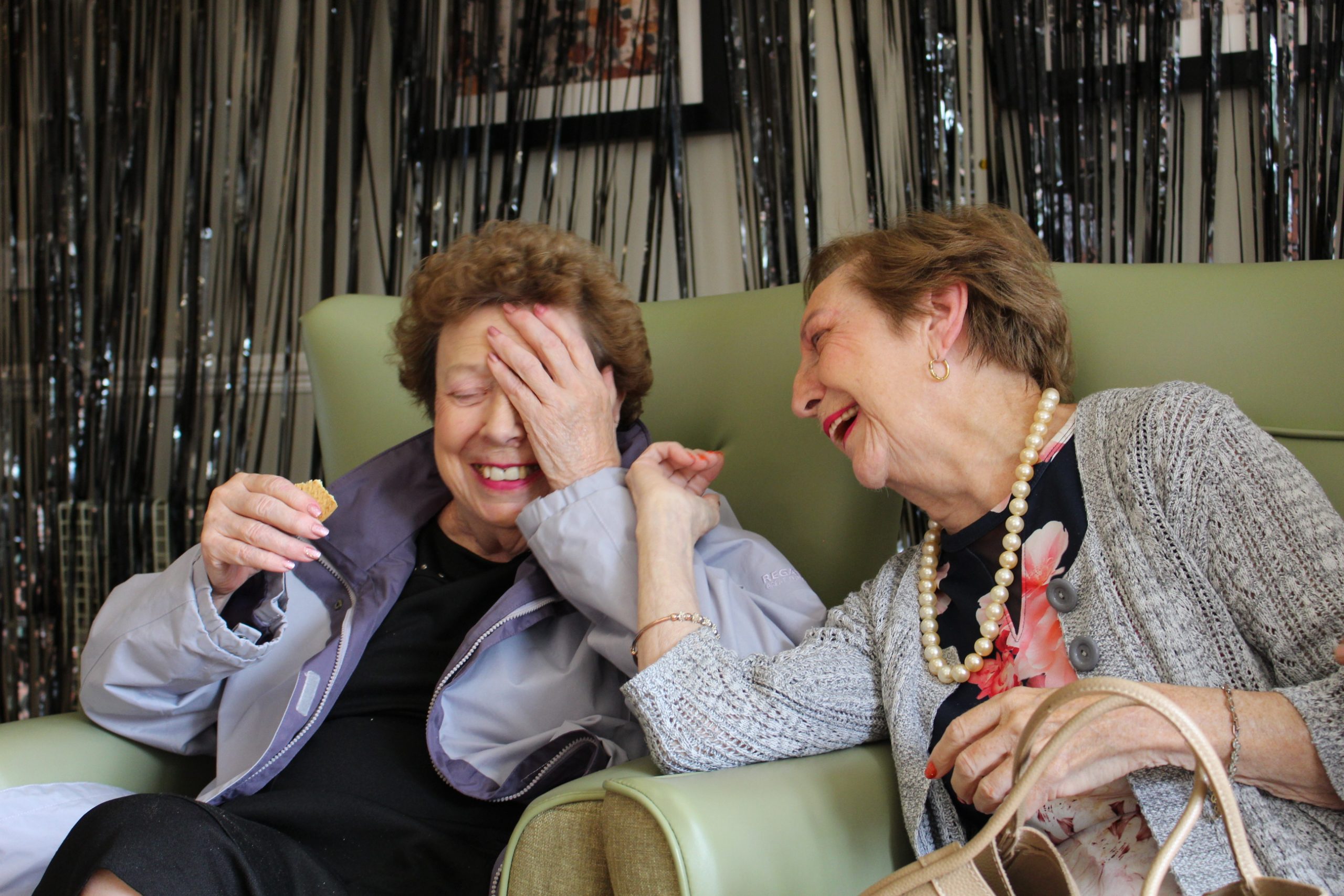Are you tired of feeling like a stranger in your own home? Do you long for meaningful connections and genuine conversations? Well, look no further! In this article, we will explore the powerful combination of empathy and communication when it comes to building deep and meaningful connections with care home residents.
Imagine walking into a care home where the staff greets you with warm smiles and open hearts. They don’t just see you as another patient or resident; they truly understand and appreciate your perspective. Through active listening techniques, they make you feel heard and valued.
Their non-verbal communication speaks volumes, as their body language conveys compassion and understanding. You feel safe, supported, and understood in this environment that fosters empathy.
This is the power of empathy and communication in care homes – it transforms mere interactions into profound connections that enrich the lives of both residents and staff members alike.
The Importance of Understanding Residents’ Perspectives
Understanding residents’ perspectives is crucial in order to truly connect with them and make them feel heard and valued. When you take the time to understand where they’re coming from, their experiences, and their unique needs, you can establish a deeper level of empathy and build meaningful connections.
By putting yourself in their shoes, you gain insights into their thoughts, emotions, and desires, which allows you to provide better care and support.
Each resident has a unique background and life story that’s shaped who they are today. By taking the time to listen to their stories and engage in conversations about their past experiences, you can gain a better understanding of their perspective.
This understanding helps create an environment where residents feel comfortable expressing themselves and sharing their thoughts openly. It also enables you to tailor your communication style to meet each individual’s needs, ensuring that they feel respected and valued.
By actively listening to residents as they share their stories or express their concerns, you can establish rapport and trust. This lays the foundation for effective communication techniques that will further enhance your ability to connect with them on a deeper level.
Active Listening Techniques for Effective Communication
By truly listening to the stories and experiences of care home residents, you can create a bridge that allows you to step into their shoes and feel their joys and sorrows as if they were your own. Active listening techniques play a crucial role in effective communication with care home residents.
When you actively listen, you not only hear the words being spoken but also pay attention to the underlying emotions and non-verbal cues. This involves maintaining eye contact, nodding along to show understanding, and providing verbal affirmations such as ‘I see’ or ‘That must have been difficult.’ By using these techniques, you show genuine interest in what they have to say, making them feel valued and heard.
Active listening helps foster meaningful connections by showing empathy towards care home residents’ perspectives. It allows you to gain a deeper understanding of their thoughts, feelings, and needs. As you engage in active listening, try to suspend judgment or preconceived notions so that you can fully immerse yourself in their world. Remember that each resident has a unique life story filled with rich experiences worth exploring. By actively listening, you not only validate their emotions but also encourage open communication, which is essential for building trust and rapport.
Transitioning into the subsequent section about ‘non-verbal communication and body language,’ it is important to note that active listening goes beyond just words. Non-verbal cues such as facial expressions, gestures, and body language often convey more meaning than verbal communication alone.
Non-Verbal Communication and Body Language
Non-verbal cues and body language can speak volumes, providing a deeper layer of understanding and connection. When communicating with care home residents, it’s essential to pay attention to their non-verbal cues as they often convey emotions that may not be expressed through words.
For example, a resident’s facial expressions can reveal whether they’re feeling happy, sad, or confused. Their posture and gestures can indicate if they feel comfortable or uneasy in their surroundings. By actively observing these non-verbal cues, you can gain valuable insights into the resident’s emotional state and adjust your communication approach accordingly.
Furthermore, understanding body language can also help establish trust and build meaningful connections with care home residents. Simple actions like maintaining eye contact when speaking to them or leaning slightly towards them while listening convey interest and attentiveness. Additionally, mirroring their body language subtly can create a sense of rapport and make the resident feel more at ease in your presence.
These non-verbal communication techniques foster empathy by showing that you’re fully present and genuinely interested in what the resident has to say.
Transitioning into the subsequent section about creating a supportive and empathetic environment for care home residents involves recognizing the importance of both verbal and non-verbal communication. While active listening techniques focus on understanding verbal messages effectively, mastering non-verbal cues allows for a more comprehensive understanding of an individual’s emotions and needs. By combining these skills with empathy and compassion, caregivers can create an environment where residents feel heard, valued, and supported in every interaction.
Creating a Supportive and Empathetic Environment
To truly create a supportive and empathetic environment, you need to foster an atmosphere of genuine care and concern for the individuals in your care. It’s not just about providing physical assistance or meeting their basic needs; it’s about truly understanding and connecting with them on an emotional level.
This means taking the time to listen actively, showing empathy through your body language and facial expressions, and responding with kindness and compassion. When residents feel that they are genuinely cared for, they are more likely to open up, trust you, and share their thoughts and concerns.
Creating a supportive and empathetic environment also involves creating a sense of belonging and community within the care home. Encourage social interactions among residents by organizing group activities or outings where they can bond over shared interests or experiences.
Foster an inclusive atmosphere where everyone feels valued and respected, regardless of their abilities or limitations. By promoting positive relationships between residents, staff members, and families, you can cultivate an environment that is conducive to emotional well-being.
In addressing residents’ needs and concerns…
Addressing Residents’ Needs and Concerns
When we take the time to truly understand and connect with the individuals in our care, we can effectively address their needs and concerns. By actively listening to residents, we can gain insight into their personal experiences, preferences, and fears. This understanding allows us to tailor our approach and provide the best possible care.
Addressing residents’ needs goes beyond fulfilling their physical requirements; it also involves meeting their emotional and social needs. For example, if a resident expresses concern about feeling lonely or isolated, we can implement strategies to increase social interaction within the care home. This might involve organizing group activities or facilitating one-on-one conversations between residents.
Additionally, by being attentive to any worries or anxieties they may have, we can provide reassurance and support that fosters a sense of security.
Effective communication and empathy are key in addressing residents’ needs and concerns in a care home setting. Taking the time to listen and understand allows us to provide personalized care that not only meets their physical requirements but also supports their emotional well-being. By creating an environment where residents feel heard and valued, we can build meaningful connections that enhance their overall quality of life.
Frequently Asked Questions
How can care home staff effectively handle difficult conversations with residents?
When handling difficult conversations with residents, it’s important to approach them with empathy and understanding. Actively listen, validate their feelings, and use clear and concise language to address their concerns.
What are some strategies for building trust and rapport with care home residents?
Use a warm smile and gentle touch to create an inviting atmosphere. Listen actively, showing genuine interest in their stories. Be patient and understanding, offering support when needed. These actions foster trust and form meaningful connections with care home residents.
How can care home staff ensure that residents feel heard and understood?
To ensure residents feel heard and understood, care home staff should actively listen, validate their feelings, use nonverbal cues to show attention and ask open-ended questions. This fosters trust and creates a safe environment for communication.
What are some common barriers to effective communication in care home settings?
In care home settings, common barriers to effective communication can include language barriers, cognitive impairments, hearing loss, and staff shortages. These obstacles can make it challenging to establish meaningful connections with residents.
How can care home staff effectively address and resolve conflicts among residents?
To effectively address conflicts among residents, care home staff can encourage open communication, active listening, and mediation. By providing a safe space for residents to express their concerns and finding mutually beneficial solutions, conflicts can be resolved with empathy and understanding.
Conclusion
In conclusion, building meaningful connections with care home residents requires empathy and effective communication. By understanding their perspectives and actively listening to them, you can create a supportive environment where they feel valued and heard.
Just like a delicate dance, non-verbal communication and body language play a crucial role in conveying empathy and understanding. Imagine yourself as a skilled conductor, orchestrating the harmony of emotions through your gestures and facial expressions. Your warm smile is like a soothing melody that brings comfort to their hearts. Your attentive posture speaks volumes, showing that you genuinely care about their thoughts and concerns. These subtle cues can make all the difference in creating a connection that goes beyond words.
Furthermore, addressing residents’ needs and concerns is vital for building trust and fostering meaningful relationships. Like a gardener tending to fragile flowers, you must nurture their physical, emotional, and social well-being with utmost care. By taking the time to listen attentively to their needs and providing appropriate support, you can help them flourish like vibrant blossoms in the garden of life.
Remember, empathy is the key that unlocks the door to authentic connections with care home residents. Through active listening techniques, non-verbal communication, and addressing their needs with compassion, you have the power to make a positive impact on their lives. So step into their world with an open heart and mind – together we can create an environment where every resident feels seen, understood, and cherished.




